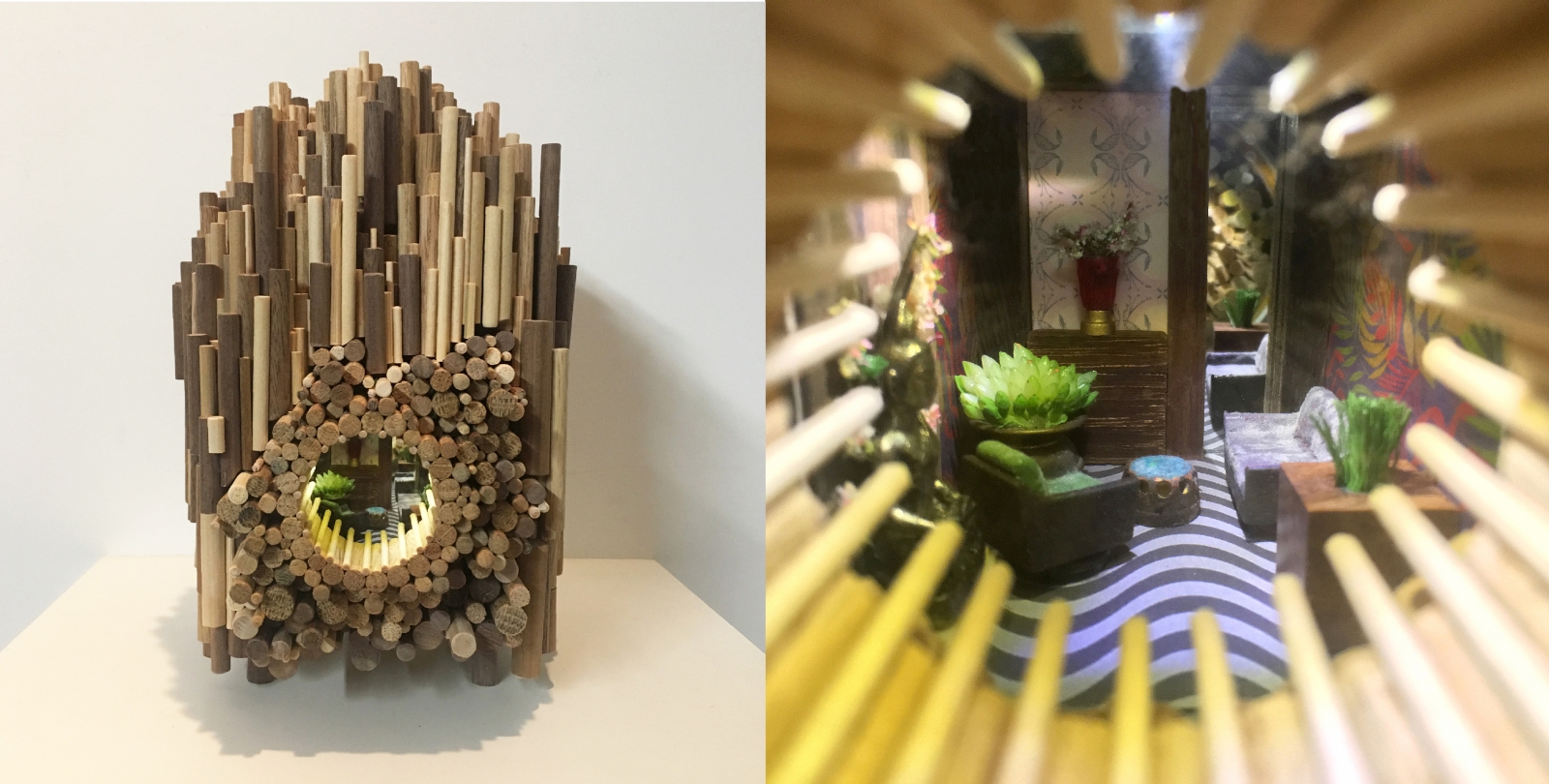
Image: Courtesy of Margie Criner
For sculptor Margie Criner, perspective is the best solution to a problem. The North Mayfair–based artist learned this at a young age and has since turned that life lesson into her career. In Criner’s work, dramatic abstract sculptures encase placid miniature scenes that are sometimes visible through little more than a peephole. The dualities — of scale and material — draw in curious viewers and upend their expectations of what is real and what is imagined.
Criner’s new exhibit, Mind Over Matter, will be on display at the Bert Green Fine Art Gallery from January 11 to February 22.
How did you get started doing miniature work?
My father was an engineer and I grew up holding the light or handing him a tool. While we were fixing the lawnmower — when I was probably seven — he said that to understand a problem, you have to look at it from all sides. I took that on a broader scale: I use miniatures as a way to tell stories in a small area. If I’m using something small to tell the story, I can cram a lot of information into a very small space.
For example, I had this chair 3-D printed for me and then I built a texture to it. Then, I built a room around that chair and and it started to look kind of zen. I displayed this piece, and a woman stopped me after experiencing it. The piece was called Mountain, and I named it after the Buddhist phrase “One mountain, many paths” — we’re all trying to reach the same goal, but we all find our own way. She said that piece really moved her, and that she’s Buddhist. She felt that the piece was about a quiet mind. She got when I was trying to do, which was a huge compliment.
Wood, wool, and hornets’ nests appear in your sculptures. How do these materials convey messages to your audience?
I love organic material that is industrialized. I love that wool is a natural fiber, and it marries well with the browns of the woods, but it’s been industrialized — it’s already present-formed and needled. Same with wood, this organic material that I can then mill down into something that looks more industrialized. And I do the same with hornets’ nests. I just peel them apart from their natural form and use them like veneer.
They all provide this coziness that’s reminiscent of furniture I grew up around in the ’60s and ’70s. Ultimately, I’m trying to create work that is rooted in my own memories and life lessons, but I try not to be super heavy-handed. I want to leave enough space for somebody else to look at it and it becomes familiar to them — like a memory they can’t quite remember, like a dream you can’t quite grasp, but you know you had it. A lot of the interior narratives are about rituals we all experience, like commuting or waiting or vacationing.
You say that your intent as an artist is to foster curiosity and connect people through their similarities. Why is this important?
A lot of times we get wrapped up in our worlds. I mean, how many times have you ridden a train and seen that everyone is either asleep or on their phone? Nobody’s just sitting there watching or talking to the person sitting next to them. We’re kind of conditioned to take ourselves out of the reality of the moment. But days slip away. We don’t even remember that train ride anymore, because we escaped in our cup of coffee or social media. Curiosity is the cornerstone for getting along, for understanding problems, for moving forward, for growth in technology. If we stay curious instead of fearful, we stay open. It would be a lot more growthful for all of us to have that openness.



